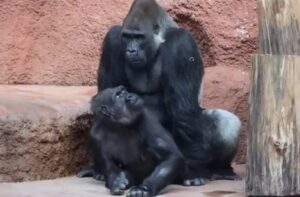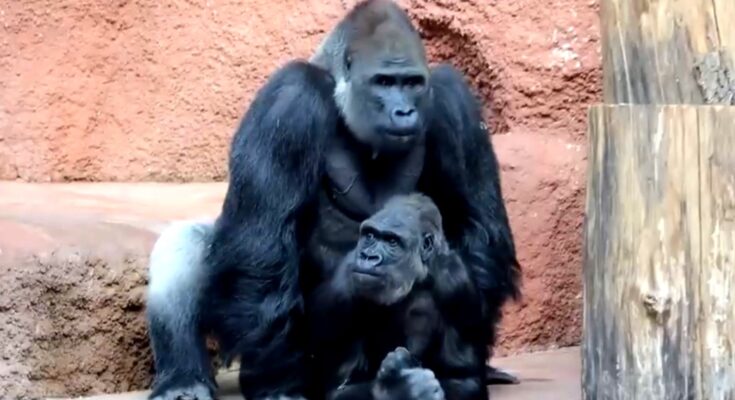Gorillas are fascinating creatures, and their social structures are particularly intriguing. A gorilla couple, typically consisting of a dominant male silverback and a female, forms the cornerstone of a larger social group known as a troop.

These relationships are not just about reproduction; they are also about social bonds, protection, and mutual support.The male in the couple, often a silverback, is the leader of the troop. Silverbacks are named for the distinctive silver hair that grows on their backs as they mature, usually around 12 years old. They are responsible for making decisions, mediating conflicts, and protecting the group from threats. The bond between the silverback and his females is crucial for the stability of the troop.

A silverback’s role is not just about authority; he also provides emotional support and maintains harmony within the group.The female gorilla, on the other hand, plays a key role in nurturing and caring for the young. Female gorillas are attentive mothers, typically giving birth to one infant every four to six years. The bond between a mother and her offspring is intense, with the infant relying on its mother for sustenance, protection, and learning. Female gorillas often form strong bonds with the silverback, relying on him for protection and support.The relationship between a gorilla couple is characterized by mutual grooming, playing, and close physical proximity, which help to strengthen their bond. Grooming is particularly important as it reinforces social structures and provides comfort. These interactions are crucial for maintaining the social fabric of the group.

Interestingly, gorilla couples can show signs of affection and attachment that are quite human-like. They have been observed holding hands, hugging, and sitting close together. Such behaviors indicate the deep emotional connections that can exist between gorillas.In summary, the dynamics of a gorilla couple are complex and deeply rooted in social structures and emotional bonds. The silverback provides leadership and protection, while the female nurtures and cares for the young, both contributing to the group’s overall stability and well-being. This interplay of roles and relationships highlights the sophisticated social lives of these remarkable primates.



